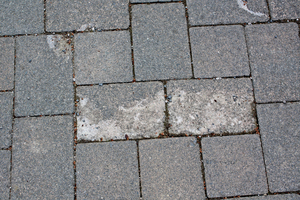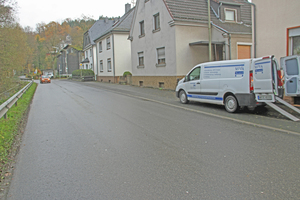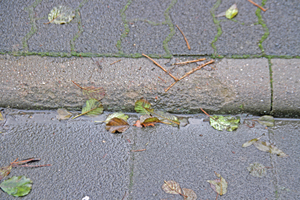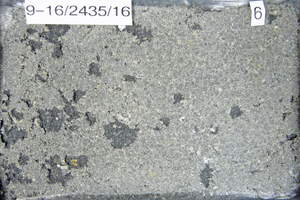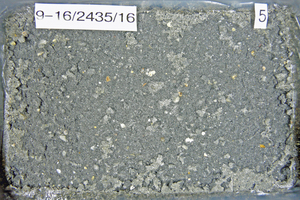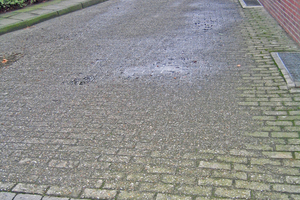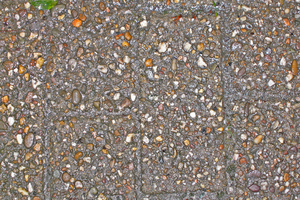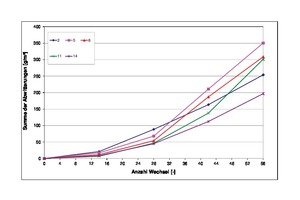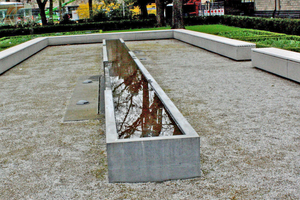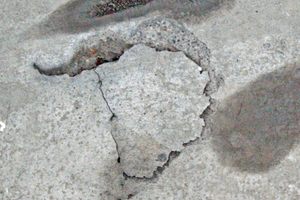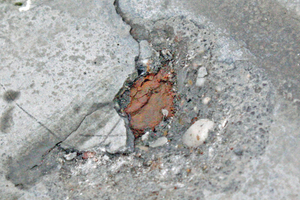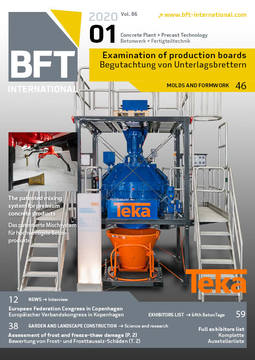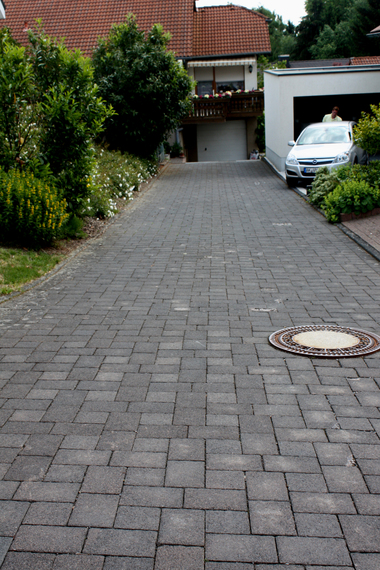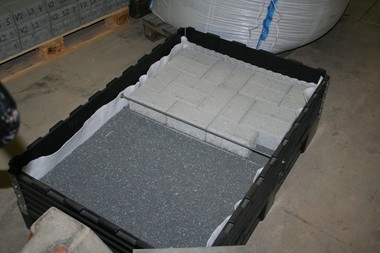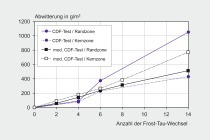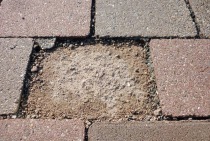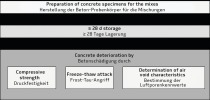Assessment of frost and freeze-thaw damage to concrete pavers (Part 2)
The first part of this article dealt with the different patterns associated with freeze-thaw damage, the impact of cracks occurring in products, and the influence of installation and use on the onset of damage. Its second part concentrates on the expert assessment of freeze-thaw damage to installed concrete pavers.
The first part of this article dealt with the different patterns associated with freeze-thaw damage, the impact of cracks occurring in products, and the influence of installation and use on the onset of damage.
Its second part concentrates on the expert assessment of freeze-thaw damage to installed pavers. More specifically, it will cover the following points:
Possible methods for verifying the freeze-thaw resistance of products
Permissible scaling rates on samples taken from installed pavements
Assessing the weather resistance of installed products and
Considering specific factors relevant to evaluating products with particular visual appeal.
1 Expert assessment of freeze-thaw damage
Experts often rely on freeze-thaw tests carried out on installed products to clarify if cement paste scaling on pavers was caused by insufficient weather resistance of products (see Fig. 1).
1.1 Methods for verifying freeze-thaw resistance
On a laboratory scale, slab or CDF tests are normally used for verifying the freeze-thaw resistance of concrete pavers. In this context, it should be noted that these two methods lead to significantly different conclusions (Section 1.7.2 in [12] contains detailed information on the freeze-thaw test methods and the assessment of related results). It is precisely these different outcomes that are fueling the debate over which of these methods is the “right” one for verifying freeze-thaw resistance. The proponents of the “more stringent” CDF test argue that the slab test does not appropriately reflect reality, and this statement is absolutely true. In fact, it is almost impossible to develop a test method capable of appropriately replicating the real situation within reasonable testing periods. However, this shortcoming equally applies to the CDF test.
Generally speaking, test methods for verifying product properties at the laboratory cannot simulate reality properly. For instance, the exposure patterns of concrete block pavements in the inner city of Cologne will surely be fundamentally different from those of concrete pavements in rural southern Germany regularly subjected to de-icing salt treatment. If laboratory tests were to reflect reality properly, we would have to ask the question whether these tests should replicate the degree of exposure in Cologne or in southern Germany.
Furthermore, the limited period available for testing alone excludes any realistic representation of exposures occurring in the field. Thus, any laboratory test method inevitably involves a “time-lapse” mode because no customer or court would want to wait for the outcomes of a freeze-thaw test for several years. Since multi-year testing periods cannot be implemented in practice, the conditions under which freeze-thaw tests are performed at the laboratory (test temperatures, gradients of heating and cooling curves, salt content) are bound to differ materially from real-life conditions.
This brief introduction alone illustrates the delicate balance to be struck by both laboratory staff and experts in the field who assess freeze-thaw damage to installed products.
1.2 Permissible scaling rates for new products prior to installation
DIN EN 1338 specifies the slab test as the reference test method for verifying the freeze-thaw resistance of concrete pavers. According to this standard, a mean scaling rate of up to 1,000 g/m2 is permissible for new concrete products prior to installation subjected to 28 freeze-thaw cycles at an age of 28 days, provided individual values do not exceed 1,500 g/m2.
To illustrate these specified values, Fig. 2 shows concrete pavers with a scaling rate of about 150 g/m2 (left) and 1,430 g/m2 (right) determined in a slab test in accordance with the standard.
The CDF test is an alternative method specified in DIN EN 12390-9 for verifying the freeze-thaw resistance of concrete. If the client specifies verification of freeze-thaw resistance in a CDF test, in deviation from DIN EN 1338, the parties to the contract need to agree on the specific limit values for permissible scaling rates to be determined in this test. For this purpose, the mean scaling rate of 1,500 g/m2 specified in ZTV W [10] as an indicative value is generally applied. In conclusion, both the verification of freeze-thaw resistance using the CDF method and the specific limit values to be adhered to must be agreed upon by the parties, and remunerated separately.
The same principle should be complied with when officially appointed experts test and assess the freeze-thaw resistance of samples taken from installed concrete block pavements. For instance, some experts apply the CDF method by default when requested to assess the freeze-thaw resistance of concrete pavers in the event of a complaint. Again, verification of the freeze-thaw behavior according to the CDF method must have been agreed upon separately by the parties. Absent any such agreement, when the parties enter into a contract on the delivery of products in accordance with DIN EN 1338, for example, such contract will “only” require compliance with the freeze-thaw resistance specifications as determined in the slab test.
This difference is crucial because the CDF test will deliver scaling rates 1.35 to 5 times higher than obtained in the slab test (see Section 1.7.2 in [12]).
1.3 Assessment of the weather resistance
of installed products
Purchasers of concrete products usually assume that pavers must not exhibit any surface scaling caused by frost or freeze-thaw impact during their intended use. Very much on the contrary, however, even the values specified for the weather resistance of new concrete pavers prior to installation (the mean scaling rate may amount to up to 1,000 g/m2 according to DIN EN 1338) prove that standards-compliant products may exhibit cement paste scaling phenomena (see Section 1.2).
Producers of concrete block pavers are not in a position to ensure that their products installed in concrete pavements will remain completely free from scaling caused by frost and freeze-thaw impact over their entire service life.
Accordingly, any assessment of frost and/or freeze-thaw damage to pavers that form part of an in-service concrete block pavement must consider the fact that even standards-compliant products with a sufficient freeze-thaw resistance during their service life may show a certain amount of scaling.
We should thus expect a certain amount of cement paste scaling to inevitably occur in the in-service condition as long as this scaling does not exceed the generally acceptable rate.
These considerations illustrate why the weather-induced cement paste scaling on concrete pavers is so difficult to assess. Thus, experts need to consider the following points, among others, to ensure an appropriate assessment of frost and freeze-thaw resistance of installed concrete block pavements:
1. Do the products comply with the requirements of applicable technical rules and standards governing new concrete paving blocks prior to installation (the mean scaling rate may amount to up to 1,000 g/m2 according to DIN EN 1338)?
2. Do the mineral aggregates meet the specifications of the applicable standard or guideline (the frost exposure test should generally reveal an aggregate scaling rate of less than 1 wt%)?
3. Does the degree of concrete spalling exceed the usual amount?
4. Are products with particular visual appeal involved? How strongly does surface scaling influence the appearance of the concrete block pavement?
In addition, influential factors in the use phase should be considered, such as de-icing service, moisture and cleanliness of the block pavement, when assessing the root cause of the damage. Finally, the number of freeze-thaw cycles the pavement has previously been exposed to also has an influence on the residual weather resistance of the products.
1.3.1 Influence of previous freeze-thaw cycles on the installed pavement
The greater the number of previous freeze-thaw cycles the concrete pavers were exposed to while installed, the more significant the accumulated damage to the products will be. Fig. 3 shows concrete blocks in a pavement exhibiting considerable cement paste scaling owing to their use. Does this paste scaling then make the pavers defective in and of itself?
Considering that this pavement has been in service for over 50 years, the degree of surface scaling appears to be absolutely in line with expectations. This is why the concrete pavers assessed in this example should not be classed as defective.
The influence of the period of use of the concrete block pavement must also be considered for the purpose of an expert assessment of the scaling rate found on installed pavers.
For instance, installed pavers were subject to a large number of actions prior to their removal that may have caused a deterioration of the material’s performance. For this reason, the limit values specified in applicable standards (such as DIN EN 1338) are usually not transferable to the assessment of the freeze-thaw resistance of samples taken from installed pavements.
The freeze-thaw cycles that the pavement was previously exposed to have a major influence on assessing the freeze-thaw resistance of the pavers. In this respect, it should be noted that the scaling rate increases exponentially rather than linearly with the number of freeze-thaw cycles also in the case of freeze-thaw tests in the laboratory. In other words, experience proves that the scaling rate measured during the first 28 cycles (red arrow in Fig. 4) is considerably lower than recorded for cycles 29 to 56 (blue arrow in Fig. 4).
In the example shown in Fig. 4, the mean scaling rate documented for the first 28 freeze-thaw cycles amounted to approximately 65 /m2, whereas the mean scaling rate recorded for the second 28 freeze-thaw cycles (i.e. 29 to 56) equaled about 285 g/m2 (i.e. more than four times the first value).
This example demonstrates that the number of freeze-thaw cycles that the installed pavement was previously exposed to has a major impact on the freeze-thaw resistance of the products at the time of the test even if the products do not reveal any visible damage prior to performing the laboratory test. For this reason, the results of freeze-thaw tests obtained at the time of the assessment (i.e. after installation and use of the concrete block pavement) cannot necessarily be used for assessing the freeze-thaw resistance of the same products at the time of delivery to the construction site.
1.3.2 Assessment of freeze-thaw damage to products with particular visual appeal
Products with particular visual appeal should fulfil not only technical specifications (permissible scaling rates) but also requirements in terms of their appearance. Fig. 5 shows an example of frost damage to a concrete block pavement with particular aesthetic appeal.
Since the functional significance of the element shown in Fig. 5 is comparatively low compared to its visual aspect, this element must comply not only with the usual technical specifications. Rather, in the case at hand, the significant deterioration of the appearance of the well (see Fig. 5) requires the detected cement paste scaling to be classified as a defect even though the limit values for the permissible scaling rate specified in the applicable standard are not reached by a clear margin. This is why the paste scaling phenomena identified constitute a defect despite the low scaling rate.
2 Summary
The second part of this article reported on the essential test methods for verifying the freeze-thaw resistance of concrete products and as-expected scaling rates measured on samples taken from installed pavements. It outlined in detail how previous freeze-thaw cycles influence the weather resistance of products and discussed the factors to be considered for assessing freeze-thaw damage to pavements with particular visual appeal.
References/Literatur

